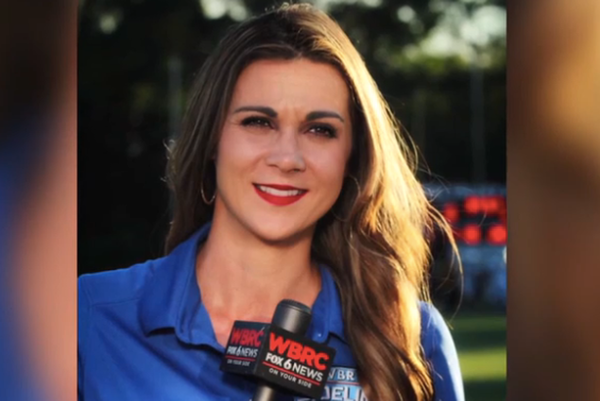
Josh Frydenberg is pegging his government’s re-election chances on a budget cash splash fuelled by a “remarkable” economic rebound, with $8.6bn promised for Australian households, and billions of dollars of new spending for the regions, defence and infrastructure.
As the government prepares to kickstart its campaign for a May election within days, Tuesday’s budget includes an extra tax cut for 10 million low and middle income workers worth up to $420, and a $250 one-off cash payment for pensioners and concession card holders aimed at softening the blow of rising inflation. These measures will cost a combined $5.6bn.
In addition, the government will also halve the fuel excise for six months – which is now set at 44 cents a litre – saving about $15 on the average price of a tank of petrol, at a cost to the budget of about $3bn.
And after the Nationals played hard-ball in last year’s net zero negotiations with the Liberals, the budget has also allocated $7.1bn for a regional development package focused on four regional hubs that cover a swathe of key electorates targeted by the Coalition, along with billions of dollars for the inland rail project and regional roads, telecommunications, health and development. Budget commitments for the regions outlined in the budget total more than $21bn over the medium term.
The regional hubs package will see $2.6bn spent on infrastructure in the Northern Territory, $1.7bn in central and northern Queensland, $1.5bn in the Pilbara and $750m in the Hunter region of New South Wales.
Frydenberg said the regions were a “priority” for the government, acknowledging that there was “a lot in this budget for the regions”.
“It’s part of a deal with the Australian people to deliver more jobs and more growth to the regions,” he said.
Labor’s shadow treasurer, Jim Chalmers, attacked the document as “more a pamphlet than a plan”, saying it showed the Coalition’s political desperation before the election.
“It is a pretty desperate political ploy when the country needed a plan for the future,” he told the ABC’s 730 program. “It doesn’t make up for the fact that people’s real wages are falling.
“It’s very short-sighted, very desperate, very panicked and I think the country deserves much better.
“They don’t have a plan that goes beyond the May election. It is the most short-sighted budget in memory – it has a shelf life of about six or seven weeks.”
Riding a wave of increased revenue driven by a tight jobs market, soaring commodity prices and lower-than- expected payments, the government has revised down forecast deficits by $103.6bn over the five years to 2025-26 compared with the midyear budget update.
The budget documents show the underlying cash balance has improved $38.1bn in 2022-23, and by $114.6bn over the four years to 2025-26.
But while the government has banked most of this to improve the budget bottom line, the total cost of policy decisions is $17.2bn next year and $30.4bn over the four years to 2025-26.
Gross debt will move above a trillion dollars in 2023-24, growing to $1.17tn by 2025-26, which is the equivalent of 44.7% of GDP.
The finance minister, Simon Birmingham, said the government’s budget management had allowed for the delivery of a dividend back to taxpayers: “But it seeks to apply those dividends in a careful, cautious, responsible way to set Australia up for the future.”
The deficit for 2021-22 is expected to be $79.8bn, with total deficits across the four-year forward estimates totalling $224.7bn.
At the same time, economic growth forecasts have been upgraded on the back of momentum in the jobs market and buoyant consumer spending, with GDP now forecast to grow by 4.25% in 2021-22, 3.5% in 2022-23 and 2.5% in 2023-24.
Since the height of the pandemic, 701,000 Australians have come off unemployment benefits, with an extra 1.2 million people back into work, driving the country’s welfare bill down $11bn over four years.
Australia’s unemployment rate will drop to 3.75% in the September quarter this year, its lowest figure in 50 years and three percentage points lower than the 7% doomsday scenario predicted in last year’s budget.
As a result of the booming jobs market, the budget says wage growth is on track to accelerate at its fastest pace in almost a decade, with the wage price index to jump from 2.75% this year to 3.25% next year.
“Broader and more representative wage measures are picking up more quickly as workers take advantage of the tight labour market, with average earnings per hour expected to increase by 5 per cent through the year to the June quarter of 2022,” budget papers say.
Frydenberg said the economic rebound outlined in the budget was “remarkable”, placing Australia ahead of all other major advanced economies.

But arguing risks to the economic outlook remain – including the Covid pandemic and the unfolding crisis in Ukraine – the treasurer said “this is not the time to change course” to a Labor government.
“This is a time to stick to our plan,” he said.
Inflation, which is on track to be 4.25% in the current financial year, is forecast to quickly moderate to 3% next year, followed by 2.75% the following year, providing only a small lift in real wages from 2022-23.
The budget papers show that wages grew at less than half the rate of inflation in 2020-21, with prices rising 3.8% and wages falling behind, growing a mere 1.7%.
Labor has already cast doubt on the government’s wage growth predictions, pointing to the 52 of 55 forecasts of wage growth that have not eventuated under the Coalition’s watch.
And, despite the government forecasting wages growth to accelerate at their fastest rate in a decade, real wages are not likely to recover to 2019 levels until 2025.
Frydenberg defended the wage growth forecasts, saying the broader national accounts measure of average earnings, which captured total remuneration including bonuses, overtime and allowances, showed stronger wage rises.
Under the cost of living package, the low and middle income tax offset will be increased by $420, meaning all workers earning up to $126,000 a year will receive an extra boost when they lodge their tax return for this year. This will increase the maximum amount to $1,500 for a single income household and $3,000 for a two-income household, with the boost costing the budget an extra $4.1bn.
The $250 tax-free cost of living payment will go to 6 million eligible Australian pensioners, welfare recipients, veterans and concession card holders “within weeks”.
Frydenberg said the cost of living package was designed to provide temporary and practical help for household budgets to deal with the rising cost of living.
“Events abroad are pushing up the cost of living at home,” he said in his budget speech. “Higher fuel, food and shipping costs are increasing inflation and stretching household budgets.
“This budget’s new cost of living package is responsible and targeted, delivering cheaper fuel, cheaper medicines and putting more money in the pockets of millions of Australians.”
The budget also includes a small business package that will give a tax incentive for investment in skills, training and digital technology, with a tax deduction of $120 for every $100 spent in these areas up to $100,000 a year.
A skills package includes $2.8bn for apprentices and $2.2bn for innovation at universities, while an extra $1bn will be spent on the government’s modern manufacturing strategy.
The budget papers also lay out the cost of the government’s flood relief and recovery effort for the New South Wales and Queensland floods, which is expected to be more than $6bn, with $3.6bn already spent.
An extra $4.7bn is being spent on health services, while an extra $1.3bn will be put towards the delivery of the national plan to end violence against women and children.
On defence, the government has massively ramped up spending over the next decade, including a $9.9bn commitment towards cyber – known as Redspice – with about $600m of this allocated over the forward estimates.
Chalmers said Labor would support the cost-of-living relief, and rejected suggestions that the extra financial support was not necessary given that the budget papers show household disposable income increasing by about 11% since the start of the pandemic.
“Of course now we’ve got petrol prices, grocery prices, building materials, rent, all going through the roof at the same time as real wages are going backwards, and so we do have families under genuine cost-of-living pressures,” Chalmers said.
“And the government is now pretending to care about those costly pressures because Scott Morrison has to call an election in the next fortnight.”







